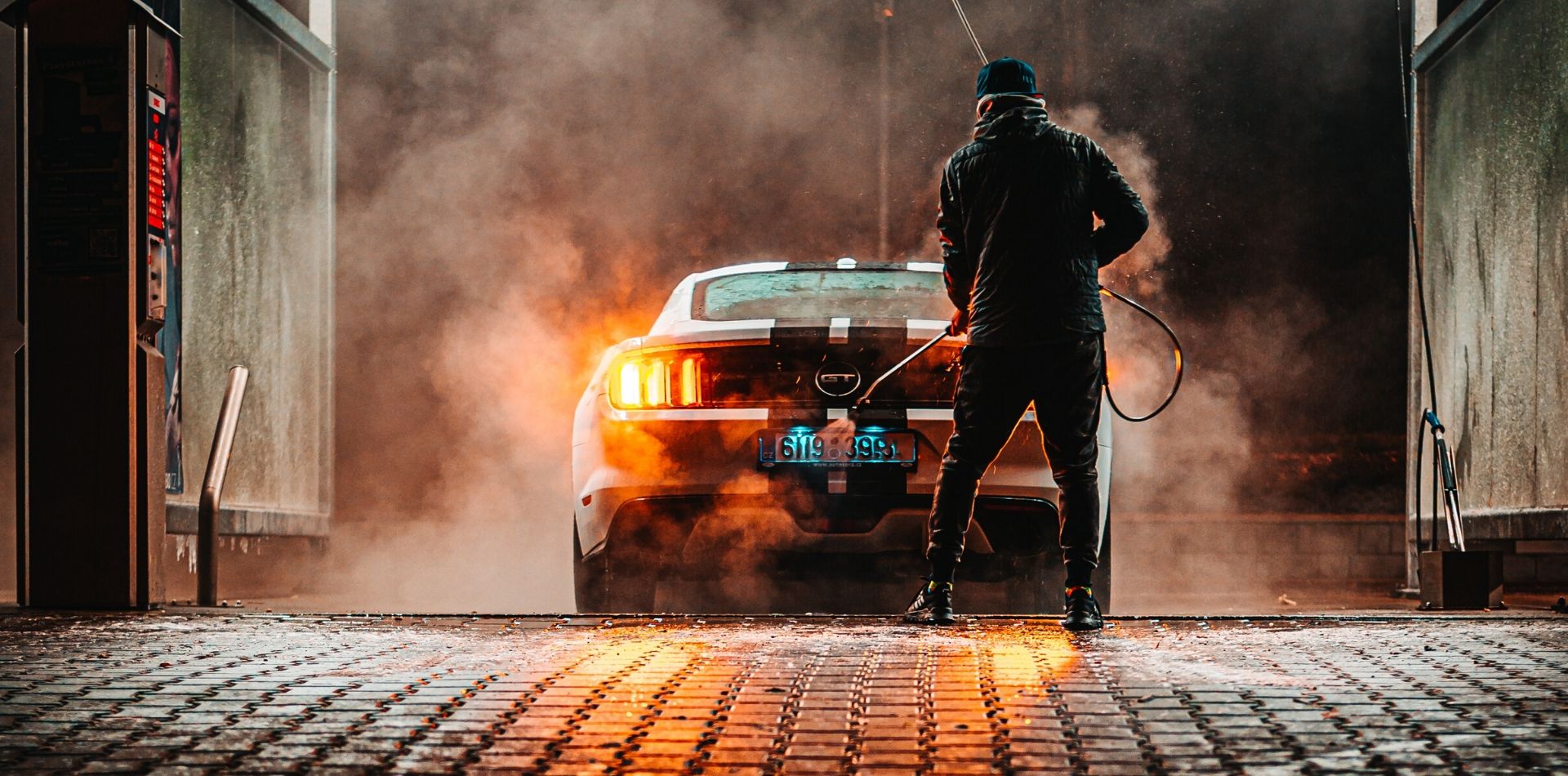What’s the 411 on Automotive Matte Finishes?
In a world filled with gloss and shine – a matte paint finish stands elevated and on its own. The matte look has seen a huge growth in recent years. In fact, what was once a custom paint experiment has morphed into factory-engineered designs available in opulent trim levels.
While the matte finish is a look is something you’ll see through the SEMA exhibit halls and frame off “restomods” on the block at Barrett Jackson, there is a lot of misleading or flat out inaccurate information on the web about matte paint.
What exactly is a matte paint finish? Is there a difference in the paint or is it how it’s applied that produces the matte look? Are there certain materials that appear better with a matte finish and is it possible to replicate a matte finish or transform a glossy finish without having to repaint the vehicle? These are all a few of the questions we’ll explore below.
But first, watch this three minute video by Ceramic Pro’s Matt Kelly to learn some facts about Matte Finishes.
What is Matte Paint?
One of the most asked questions on automotive forums addressing custom paint is “where do I buy matte paint”. So – let’s answer this one right off the top. There isn’t a matte PAINT; it’s a matte finish. Automotive paint by nature is dull. When it’s sprayed onto metal, plastic, or any other surface, it will bond and initially cure.
To provide the glossy appearance, a clear coating is applied to the car paint surface. A traditional clear coat is intended to fill any divots or minor dips that is created by the rough pigment found in the paint. This creates a smoother surface, with added depth. This is what produces the gloss appearance.
The matte paint job finish also includes a clear coating. However, instead of filling and leveling the imperfect paint, it creates small dimples in the final coating. This prevents the paint from reflecting light and thus, creates a dull or matte finish.
Since it’s the way and type of clear coating used that creates the matte appearance, any color of paint can be “matted” (is that even a word?). However, most matte cars rolling out of Mercedes, BMW, and other luxury brand factories these days are black or white.
If You Have a Matte Finish - You NEED to Protect It Get a FREE Quote for Ceramic Pro Nano Coatings Today!
What are the Types of Matte Finishes?
Another common misunderstanding is that all matte finishes are the same. On the contrary, there are several levels of matte paint finish – each producing their own unique luster – or lack thereof. There are three types of matte finishes that are common in North and South America.
True Flat Matte Finish
If you’re looking for the ultimate stealth look, the True Flat Matte Finish should be your objective. This is the most common type of matte finish. It’s essentially the same look that appears after using a can of flat black spray paint to cover bare metal. It’s unrefined, grainy, and tends to have no sheen whatsoever.
A true flat finish will produce shadows, but you won’t see a reflection at all when looking at the paint. The main problem with a true flat matte finish is that the car somewhat appears ‘primered’ or has an unfinished look. To combat this issue, car enthusiasts compliment the vehicle with accessory parts, like wheels, bumpers, grilles, and/or badging that are intended to accentuate the matte finish.
This is the “blackout” look that is quickly gaining steam at car dealerships across the globe. In this case, the factory will add gloss black accent pieces to the car – which provides some contrast – but still looks flat out wicked.
Satin Matte Finish
If you’re looking for that middle ground between mild and wild – a satin matte finish is a good place to start. This gives you the best of both worlds. It provides the sheen of a gloss finish without the reflective properties that matte is known to produce.
You’ll find the satin finish on most factory-direct car paint jobs. While it might appear less ‘stealthy’ than the flat matte finish, the satin look really pops – especially in sunlight or under LED lights.
Automotive painters can accomplish the satin finish by using a clear that is specifically formulated to produce the sheen – along with the reflective blocking. Then there are those who swear by spraying the base coat, followed by the clear and flat combo of clears.
Semi-Gloss Matte Finish
For those in search of pushing that glossy paint-coated envelope, the semi-gloss matte fits this objective perfectly. The best way to describe the difference between satin from semi-gloss is like comparing white plastic to eggshell.
Satin will produce the ‘rough texture’ or pebble-looking appearance of matte. Semi-gloss on the other hand will smooth over those tiny imperfections or dimples to create a subdued paint surface. Semi-gloss paint is not as ‘high-maintenance’ with regards to maintenance and upkeep – so it’s a good fit for those looking for a user-friendly matte.
Breaking Down the Truth and Myths About Matte Finishes
We mentioned this briefly in the introduction, but there are a lot of myths and flat out misinformation about matte finishes. However, there are also some facts that should be driven home. Mainly, the debate stems from explaining whether a matte finish can be waxed.
Myth of Truth – You Can’t Wax a Matte Finish
This is TRUE. Wax is designed to be applied to a flat and smooth clear coat finish – of which we explained above – a matte finish just doesn’t possess. Applying wax is intended to provide protection, but also amplify the shine of the clear coat/paint combination. When you try to use your dad’s old can of Turtle Wax on the matte surface, you’ll end up with a slimy mess.
Myth or Truth – You Have to Create Your Own Car Shampoo to Wash Matte Finish
False. What about washing a matte finish car? There are some who claim that the only way to wash matte finish paint jobs is by coming up with some home-brewed concoction – usually blending a detergent like dish soap, with an acid like vinegar.
So, that’s not entirely accurate.
Many of today’s off-the-shelf car washes contain wax, mainly used as a lubricant during the washing process. These waxes can – and often will, leave a residue that is ‘buffed’ into the paint surface during the drying process. Like the example above, using this type of wax on a matte finish clear coat will wreck the look and appearance.
However, there is no need to use the “shade-tree soap brew” on your matte finish. In fact, using detergents (which are pH positive or a stronger base) – combined with vinegar (which is pH negative or acidic) is just a recipe for more damage of the finish.
There are several car shampoos that are both pH neutral (which is gentle on all automotive surfaces) and are wax-free. This allows you to gently remove dirt, road grime, and debris – without leaving a wax layer of ugliness – or what some consider to be a cheap matte sealant.
One thing that rains true about matte finished cars is making sure to not to use automated car wash facilities. Those places always use a wax-enhanced car soap – which will not react well to your matte finish. It’s also not a good idea to wash your car with a metallic paint job at these places.
Myth or Truth – Repairing Scratches and Chips is Nearly Impossible on a Matte Finish
Unfortunately – TRUE. Matte finishes are just as durable and normal gloss-finished paint jobs, and just as susceptible to scratches and paint chips. However, unlike a gloss clear coat on the car’s finish that can be easily polished during paint correction, the matte finish is not as simple to repair.
In fact, in most cases, if the finish is damaged, major repair is needed. Even a simple stain caused by bird crap left on the unprotected surface too long can lead to thousands of dollars in repair.
How to Protect a Matte Finish
Let’s be real – if you’re going to invest in a matte finish, it simply makes sense to protect it from damage, improve the ability to wash it, and keep that matte looking – mattier..(again – not sure if that’s a word – but you get my drift right)?
If you can’t use car wax – and paint sealants aren’t all that great either – how can you protect a matte finish? Well, there are two great options that you should consider.
A Professional-Grade Ceramic Pro 9H Coating
A nano ceramic coating like Ceramic Pro 9H is an exceptional way to protect and enhance the look of your matte finish – without causing increased gloss or producing a shiny effect. The Ceramic coating is engineered and formulated to bond directly to the matte clear coating, by filling those microscopic imperfections with a transparent – yet exceptionally strong layer of quartz or glass.
Once cured, the ceramic coating then forms an ultra-flat layer. With each additional layer of coating, that protection gets stronger, enhancing the protective properties – without increasing shine. It amplifies what’s underneath that coating – making the matte finish stand out.
Finally, a top coating is added to the ceramic coat – which produces an ultra-slick surface, making water, dirt, dust, bug splatters, tree sap, and other sticky stuff less likely to bond to the coating. This is known as producing hydrophobic properties – which keeps the vehicle looking cleaner for longer periods. It also makes cleaning the vehicle easier.
A Matte Specific Paint Protection Film
There is a growing line of matte vinyl wrap products on the market. The problem is that wraps don’t seal or protect as well as PPF. If you’re looking for an elevated protection – that will repel small rocks, tree branches and other road debris that can cause chips and paint damage, installing Kavaca Matte PPF is a superior solution. Kavaca by Ceramic Pro is an exceptionally strong and durable paint protection film.
It’s the only PPF on the market that has INSTANT HEALING capability. It uses nanotechnology to quickly heal scratches caused by sharp objects. While other PPF’s can be healed with direct heat, that requires a physical repair. Kavaca repairs itself in a matter of seconds.
Now – here is the cool part. Kavaca can be purchased with a matte-specific translucent film. This not only keeps your matte finish looking the same – but can transform your gloss paint job into a matte one in a single afternoon.
Our team of professional PPF installers and auto salons can apply Kavaca Matte to any type of paint surface, any color, and create that head-turning matte finish without having to repaint the entire vehicle. Plus, Kavaca is backed by a CarFax documented warranty – which protects the original finish of your vehicle, increasing your resale and trade-in value.
The days of spending five digits on converting your gloss paint job to a matte finish are over. Whether you’ve got an existing matte finish paint job that you’d like to protect or looking to convert your gloss paint to a matte finish, Ceramic Pro auto salons has a simple and affordable solution.
Click the link below to request an estimate for matte finish paint protection or to local a Ceramic Pro auto salon near you.










